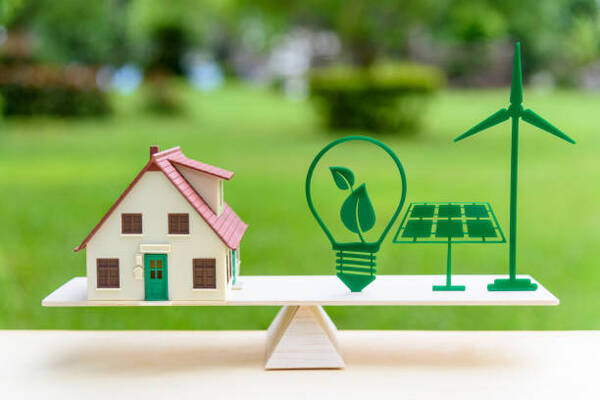- 1-905-452-8193
- Contact Us
- Member Login
- Get Listed Today
- 220,911 members

An energy-efficient home has been designed with efficiency in mind. It is built to keep energy costs lower, reduce greenhouse gas emissions, and help protect the environment. An energy-efficient home uses a combination of insulation, high-efficiency windows, solar installation Sydney, air sealing techniques, and advanced heating and cooling systems to reduce energy consumption.
To further maximize energy efficiency, homeowners should consider using renewable energy sources such as solar or wind power for hot water needs and electricity generation. With an optimized design, thoughtful installation of these various products can lead to substantial savings on utility bills and a cleaner environment.
Here are some easy ways to make your living space more energy efficient.
Change Your Light Bulbs
Switching out traditional incandescent light bulbs for LED or CFLs (Compact Fluorescent Lightbulbs) can make a huge difference in energy efficiency, as these bulbs require much less electricity to produce the same amount of light.
Install Solar Panels
While solar panel installation may be costly upfront, the savings gained from using renewable energy sources over time will be worth it. You’ll receive credit from your utility company for any excess power you produce, and your monthly energy bills will be significantly lower.
Seal Air Leaks
Unsealed air leaks and gaps can allow hot or cold air to enter your home, causing your HVAC system to work harder than it needs to maintain a comfortable temperature. Inspect windows, door frames, and any other areas where air might be entering or escaping from the house, then seal them with caulk or weatherstripping.
Insulate Your Home
Adding insulation is one of the most cost-efficient ways to make your home more energy efficient. By increasing the insulation of walls and ceilings, you’ll keep heated or cooled air inside longer and reduce the amount of electricity needed for climate control.
Upgrade Your Appliances
If your appliances are more than ten years old, they’re likely quite inefficient. Newer models use much less energy to power them and are worth the investment for long-term savings.
Buy Energy-Efficient Products
Look for the Energy Rating label when purchasing new items for your home – such as televisions, air conditioners, furnaces, refrigerators, washing machines, and dishwashers – as these products have been tested to meet strict energy efficiency guidelines set by the U.S Department of Energy.
Install a Programmable Thermostat
Installing a programmable thermostat will allow you to set different temperatures for different times of the day so that you don’t have to remember to adjust the thermostat manually. You can also use it to monitor and control your home’s temperature remotely using a smartphone app.
Unplug Electronics Not in Use
If you leave your electronics plugged in all the time, they’ll still draw a small amount of electricity even when not being used. To prevent this from happening, unplug any unnecessary electronics when not in use or invest in a power strip with an on/off switch that will allow you to easily turn off multiple appliances at once.
Investigate Renewable Energy Sources
Many states offer incentives for homeowners who switch their electricity supply to renewable sources, such as solar and wind. Research what’s available in your area and consider the cost-benefit of making the switch.
Educate Your Family
Make sure everyone in your family understands how to be energy efficient by teaching them about turning off lights when leaving a room, lowering blinds on hot days to keep out direct sunlight, and only running full loads in the dishwasher or washing machine.
Clean Your Air Conditioner Filters
Dirty air filters can block airflow throughout your home, causing your HVAC system to work harder than it needs to circulate air. Check your filters monthly and replace them every three months for optimal efficiency.
Utilize Natural Light
Whenever possible, take advantage of natural sunlight when it’s available instead of using electric lighting. Open blinds and curtains on sunny days to let the light in and close them when it’s dark outside to help keep your home cool.
Making small changes in how you use energy in your home can make a big difference in the long run. By following the steps above, you can lower your energy bills and help reduce carbon emissions at the same time. Good luck!
